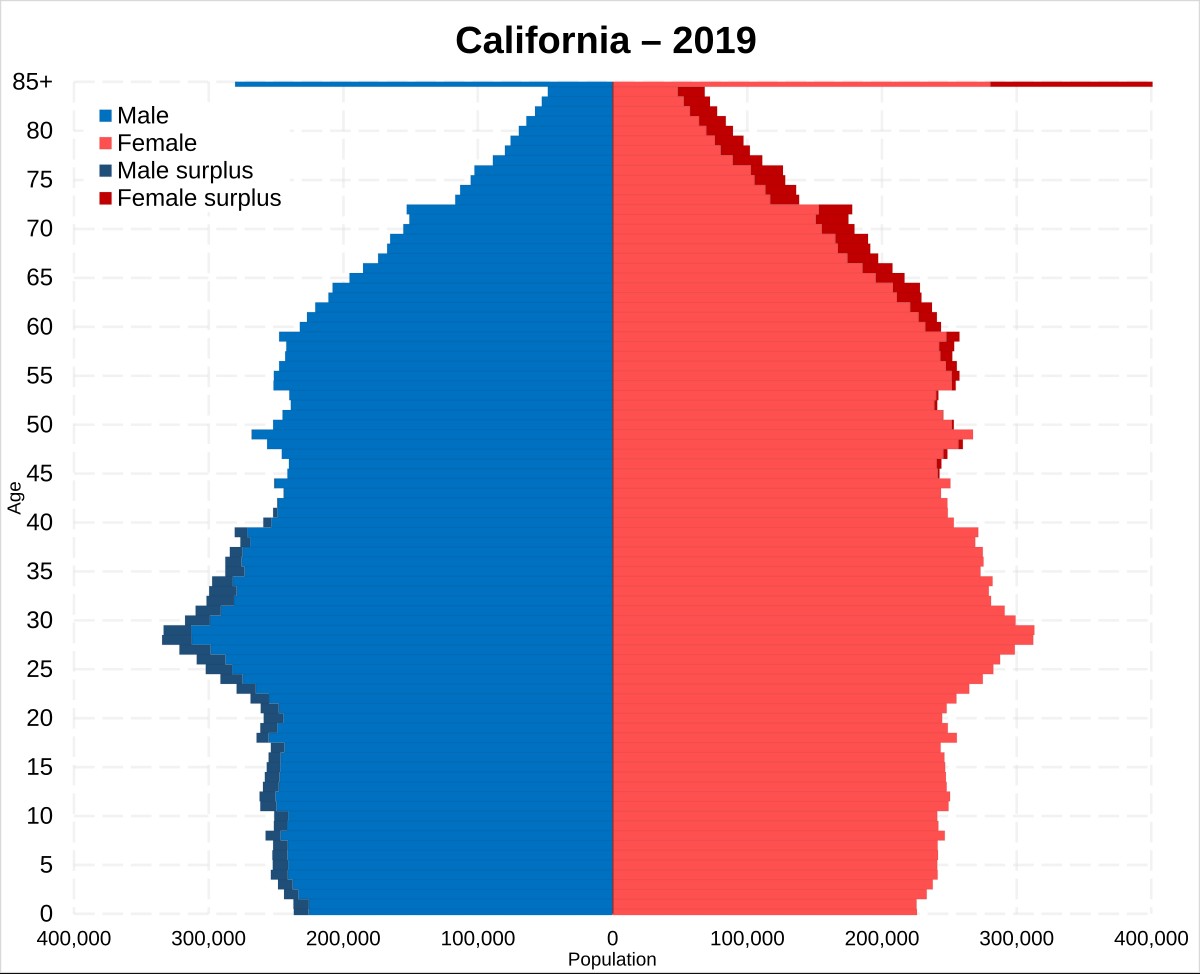
California, long known as America's most populous state, is experiencing a demographic shift that could challenge its top position. Recent data from the U.S. Census Bureau paints a picture of uneven population changes across the Golden State, with some areas growing while others face significant declines.
The Big Picture
Despite a slight uptick in population last year, California has been on a downward trajectory since 2019. The state's total population decreased from 39.53 million in 2020 to 38.97 million in 2023, according to census figures. This trend places California among the fastest-shrinking states in the nation, second only to New York.
A Tale of Two Californias
The population decline is not uniform across the state. Coastal counties, including major metropolitan areas like Los Angeles and San Francisco, have experienced substantial population losses. However, a different story is unfolding in the central regions of California.
Growing Counties
The top five counties showing population growth over the past three years are:
- San Benito County: 6% increase
- Yuba County: 5% increase
- Madera County: 4% increase
- Merced County: 4% increase
- Placer County: 4% increase
Shrinking Counties
Conversely, the counties with the most significant population decreases are:
- Lassen County: 11% decrease
- San Francisco: 7% decrease
- Alpine County: 5% decrease
- San Mateo County: 5% decrease
- Del Norte County: 4% decrease
Several other counties, predominantly along the coast, have seen a 3% population decline, including Alameda, Los Angeles, Santa Clara, and Santa Cruz.
Factors Driving the Shift
The University of Southern California attributes this migration towards the Central Valley primarily to high housing costs, congestion, and overall cost-of-living pressures along the coast. Surveys by the Public Policy Institute of California reveal that about one-third of Californians are considering leaving the state due to housing expenses.
The COVID-19 pandemic has also played a role, with remote work opportunities allowing higher-income households to relocate. Some residents cite political reasons for their departure as well.
Demographic Challenges
Compounding the outmigration issue, California's birth rates have plummeted. In 2008, the state's fertility rate was above the national average at 2.15 children per woman. By 2020, it had fallen to 1.52, ranking seventh-lowest in the country.
This demographic shift is leading to an aging population. The California Department of Aging projects that by 2031, one in four Californians will be over 60 years old, nearly double the proportion seen in 2010.
Implications for the Future
These population trends raise critical questions about California's future. The state may face challenges in areas such as healthcare, transportation, and other essential services for an aging population. The changing demographics could also impact California's prominent position in research and innovation.
Politically, the state has already felt the effects of its slowing growth. In 2020, California lost a congressional seat for the first time following the census, and continued slow growth may lead to further losses in representation.
As California navigates these demographic changes, policymakers and residents alike will need to adapt to the evolving landscape of the nation's most populous state.